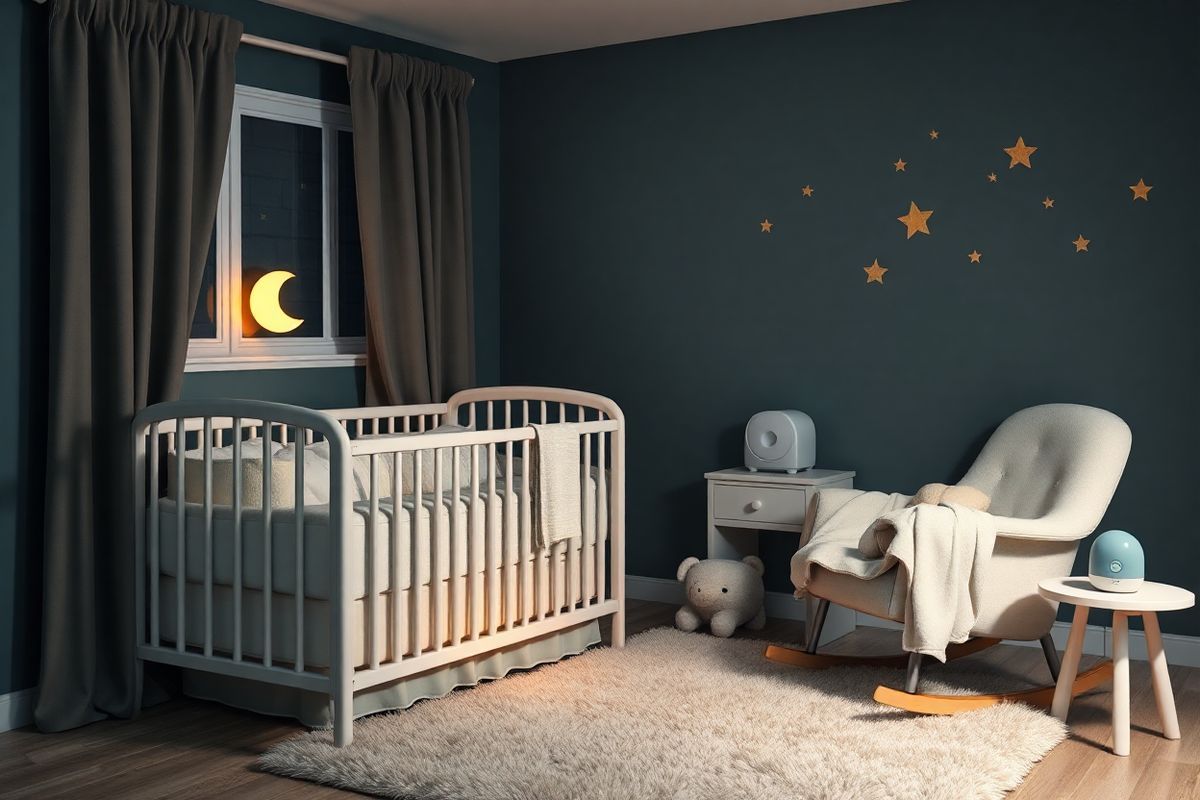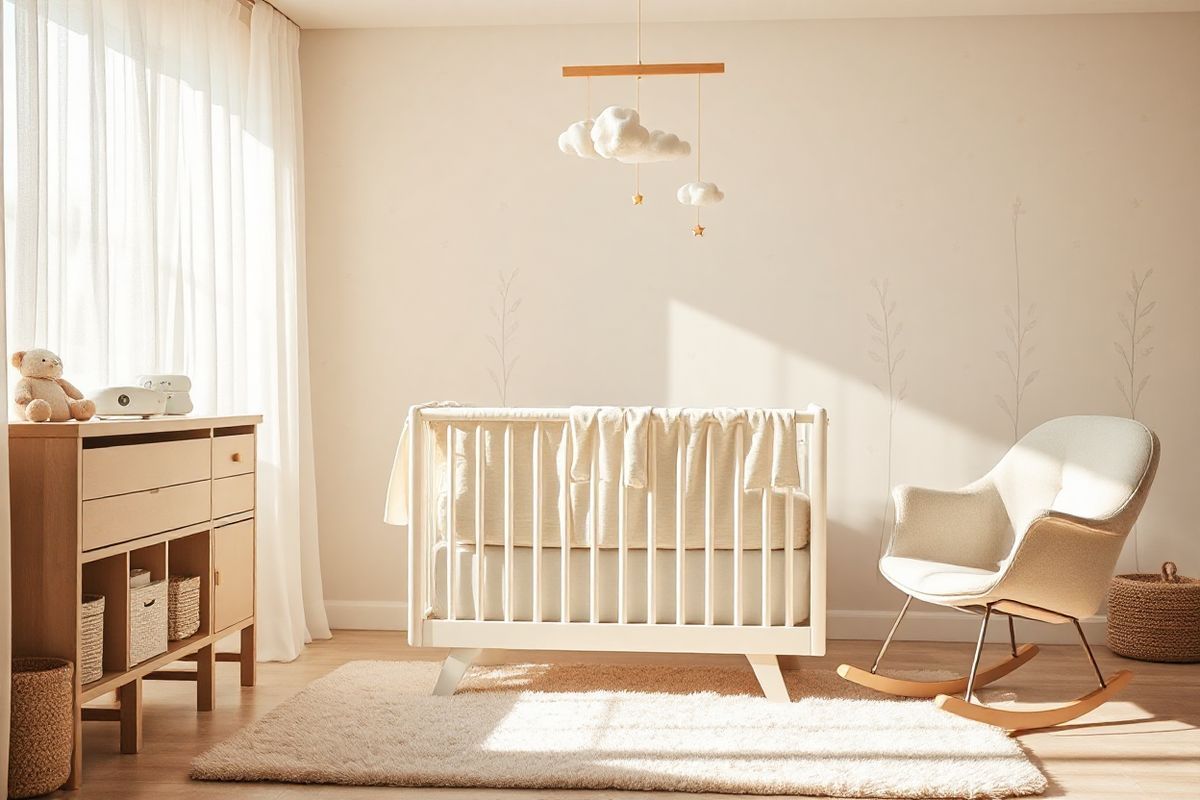Table of Contents
Understanding the Importance of Sleep Training for Your Newborn

sleep training is not just about getting your baby to sleep through the night; it’s about establishing healthy sleep habits that can benefit both the child and the parents. According to research, sleep is foundational to the overall health and wellbeing of a child, as it is linked to growth, mood regulation, and cognitive development. A well-rested baby is generally happier, more alert, and more capable of learning (Huckleberry, 2023).
Chronically disrupted sleep can lead to various issues, including poor school performance, irritability, and even maternal depression (Cleveland Clinic, 2023). With the right sleep training methods, parents can help their newborns develop the ability to self-soothe and sleep independently, which can foster a sense of security and help reduce the stress levels within the household.
TablBenefits of Sleep Training
| Benefit | Description |
|---|---|
| Improved sleep quality | Helps babies sleep longer and more soundly. |
| Enhanced mood | Well-rested babies are typically happier and less fussy. |
| Better cognitive function | Adequate sleep supports brain development and learning. |
| Less parental stress | Parents can finally get the rest they need to be effective caregivers. |
Essential Tips for Creating a Calming Sleep Environment
Creating a conducive sleep environment is crucial for successful sleep training. A calming atmosphere can signal to the baby that it is time to wind down and prepare for sleep. Here are some effective strategies:
-
Darkness: Use blackout curtains to keep the room dark during nighttime sleep. This helps reinforce the distinction between day and night (Summer Health, 2023).
-
White Noise: A white noise machine can drown out background sounds that might disturb the baby. Consistent sound can mimic the womb environment, which is comforting for infants (Parents, 2023).
-
Comfortable Temperature: The room temperature should be between 68°F and 72°F. Dress your baby in breathable fabrics to keep them comfortable throughout the night (Taking Cara Babies, 2023).
-
Safe Sleeping Surface: Ensure that the crib or bassinet is firm and free from any soft items, which can pose a suffocation risk (Stanford Children’s Health, 2023).
-
Bedtime Routine: Establish a calming bedtime routine that includes activities such as bathing, reading, and gentle rocking. This routine helps signal to the baby that it is time to sleep (Mayo Clinic, 2023).
TablSleep Environment Checklist
| Element | Recommendation |
|---|---|
| Light | Use blackout curtains to darken the room. |
| Sound | Employ a white noise machine for consistent background noise. |
| Temperature | Maintain a room temperature of 68°F to 72°F. |
| Crib Safety | Use a firm mattress, fitted sheet, and avoid soft objects. |
| Routine | Follow a consistent and calming bedtime routine. |
Responding to Sleep Cues: How to Recognize When Your Newborn is Tired
Recognizing your baby’s sleep cues is essential for effective sleep training. Newborns often exhibit signs of tiredness before they become overtired, making it crucial to respond promptly. Common sleep cues include:
- Yawning
- Eye rubbing
- Fussiness
- Staring blankly
By placing your baby in their crib when they show these cues, but are still awake, you can help them learn to fall asleep independently (Taking Cara Babies, 2023).
TablCommon Sleep Cues
| Cue | Description |
|---|---|
| Yawning | A clear sign that the baby is tired. |
| Eye rubbing | Indicates the baby is feeling sleepy. |
| Fussiness | Heightened irritability can signal fatigue. |
| Staring | A lack of interest in surroundings suggests tiredness. |
Building a Consistent Bedtime Routine for Better Sleep Outcomes
A consistent bedtime routine can significantly enhance your baby’s ability to fall asleep. It prepares them for sleep both physically and mentally. Consider implementing the following steps:
-
Warm Bath: A calming bath can relax your baby and signal that it’s almost bedtime.
-
Diaper Change: Ensure your baby is comfortable and dry.
-
Quiet Feeding: Engage in a quiet feeding session in a dimly lit room.
-
Cuddly Time: Spend some quiet time cuddling before placing your baby in their crib.
-
Bedtime: Place your baby in the crib while they are drowsy but still awake to encourage self-soothing (Cleveland Clinic, 2023).
TablSample Bedtime Routine
| Activity | Duration |
|---|---|
| Warm Bath | 10 minutes |
| Diaper Change | 5 minutes |
| Quiet Feeding | 15 minutes |
| Cuddly Time | 10 minutes |
| Bedtime | Transition to crib |
Overcoming Common Sleep Challenges: Insights from Experienced Parents

Many parents encounter sleep challenges that can complicate the sleep training process. Here are some common hurdles and tips on how to overcome them:
-
Night Wakings: It’s normal for newborns to wake up frequently. When they do, allow them some time to self-soothe before intervening. If they continue to fuss after a few minutes, check on them briefly without picking them up.
-
Fussiness: If your baby seems overly fussy during bedtime, assess their environment. They might be too hot, cold, or overstimulated. Adjust their clothing, room temperature, or limit stimulation before bedtime (NHS, 2023).
-
Transitioning to Crib: If your baby is used to sleeping in your arms, transition them to the crib gradually. Start by placing them in the crib once they are drowsy and gradually increase the time they spend there (Taking Cara Babies, 2023).
TablCommon Sleep Challenges and Solutions
| Challenge | Recommended Solution |
|---|---|
| Night Wakings | Allow self-soothing before checking on the baby. |
| Fussiness | Assess environmental factors (temperature, stimulation). |
| Crib Transition | Gradually acclimate your baby to sleeping in the crib. |
FAQ
Q: When is the best time to start sleep training?
A: Experts recommend beginning sleep training when your baby is around 4-6 months old, as they are developmentally ready to learn to self-soothe (Cleveland Clinic, 2023).
Q: Is sleep training safe for my newborn?
A: Yes, sleep training is generally considered safe. Studies have shown that it does not have long-term negative effects on children (Huckleberry, 2023).
Q: How long does sleep training take?
A: The duration varies by method and child but typically takes about three to four nights to see significant improvement (Cleveland Clinic, 2023).
Q: Can I still feed my baby at night while sleep training?
A: Yes, you can continue to feed your baby during the night if needed, especially if they are under six months old. The focus of sleep training is to help them learn to self-soothe and fall asleep independently (Mayo Clinic, 2023).
Q: What if my baby cries during sleep training?
A: Some crying is normal as your baby learns to self-soothe. It’s important to stay calm and consistent with your approach. Over time, they will learn to fall asleep on their own (Taking Cara Babies, 2023).
References
- Huckleberry. (2023). Sleep training essentials: everything you need to know about the basics of sleep training. Retrieved from https://huckleberrycare.com/sleep-training-essentials
- Cleveland Clinic. (2023). When and how to sleep train your baby. Retrieved from https://health.clevelandclinic.org/when-and-how-to-sleep-train-your-baby
- Summer Health. (2023). Why won’t my baby sleep? 9 sleep tips for newborn slumber. Retrieved from https://www.summerhealth.com/blog/why-wont-my-baby-sleep-9-sleep-tips-for-newborn-slumber
- Parents. (2023). Experts share the best baby sleep tips ever. Retrieved from https://www.parents.com/baby/sleep/tips/the-best-baby-sleep-tips-ever/
- Taking Cara Babies. (2023). Newborn sleep schedule. Retrieved from https://takingcarababies.com/newborn-sleep-schedule?srsltid=AfmBOoplr4pmmD-mNCvFTeY5hjQiSqZ24OcxzorIJu3AEnat5BfTEQAB
- Mayo Clinic. (2023). Sleep and your newborn (for parents). Retrieved from https://kidshealth.org/en/parents/sleepnewborn.html
- Stanford Children’s Health. (2023). Helping your baby to sleep. Retrieved from https://www.nhs.uk/conditions/baby/caring-for-a-newborn/helping-your-baby-to-sleep/
- NHS. (2023). Helping baby sleep through the night










